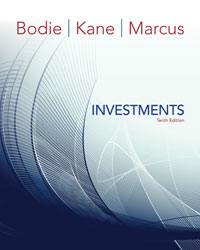
INVESTMENT ECONOMICS
 |
| Spring 2014 |
 |
Economics 494 INVESTMENT ECONOMICS |
|
|
|
|
I. Background A.
The Investment Environment
1. Real assets
2.
Financial assets a.
Fixed income (debt) securities
Ex. – Bonds b.
Equity – represents ownership of a company
(2)
Capital gain – appreciation in the price of
a security
c.
Derivative securities
Ex. – Options, futures contracts . 3.
Financial markets and the economy a.
Provides information about prospects of
companies b.
Consumption timing
c.
Allocation of risk
d.
Separation of ownership on management
e.
Corporate governance and ethics
.
4.
The investment process
a.
Asset allocation – choice among broad asset
classes b.
Security selection – valuation of particular
securities 5.
Competitive markets a.
Risk-return trade-off
b.
Efficient markets
6.
The players a. Firms – net demanders of
capital b.
Households – net suppliers of capital c.
Government – either, although a borrower
recently d.
Financial intermediaries
- brook borrowers and suppliers together e.
Investment bankers – help companies sell
debt and equity in market (1)
Primary market – new issues of securities
first sold in market (2) Secondary market - trading
of previously issued securities f. Venture capital and private
equity
. B.
Asset Classes and Financial Instruments 1.
Money market
a.
Treasury bills
b.
Certificate of deposit (CD)
c. Commercial paper
d. Bankers' acceptances e. Eurodollars f. Repurchase agreements (repos) and reverses g. Federal funds h. Brokers' calls i. LIBOR market . 2. Bond market
a. Treasury securities (1) Notes - between 1 and 10 years (2) Bonds - greater than 10 years b. Treasury Inflation-Protected Securities (TIPS)
c. Federal agency debt d. International bonds e. Corporate bonds f. Mortgages and mortgage-backed securities g. Municipal bonds
r (1- t) = rm r = rm / (1-t) . . . . . 3. Equity securities a. Common stock
b. Preferred stock
c. American Depository Receipts (ADRs)
. C. Miscellaneous equity topics 1. Stock indexes a. Dow Jones
. . . . . b.Standard and Poor's
. . . . . . c. Other indexes (1) NASDAQ Composite
(2) Wilshire
. 2. How stocks are traded a. Types of orders (1) Market orders
Ex. - . . (2) Price-contingent orders
Ex. - . .
Ex. - . .
. . . . b. Buying on margin
. . . . . . c. Short sales
. . . . . . 3. Mutual funds
a. Types of funds (1) Money market funds (2) Equity funds (3) Sector funds (4) Bond funds (5) International funds (6) Balanced funds (7) Asset allocation funds (8) Index funds . b. Mechanics
(1) Front-end load - fee paid when investing (2) Back-end load - fee paid when redeeming
. c. Exchange traded funds (ETFs)
. d. Mutual fund Information |